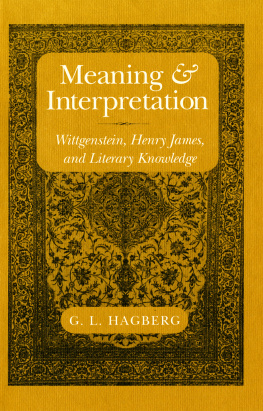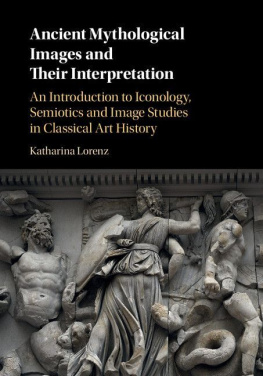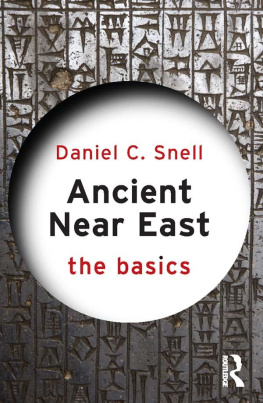p.i
Losing Ones Head in the Ancient Near East
Building on a vast documentary record that covers the entire Syro-Mesopotamian tradition, Dolces analysis offers an in-depth study in visual semiotics. She identifies specific semantic codes and an explicit syntactical organization, through which a strong message was conveyed by means of visual imagery. This is iconology at its best: by highlighting the coherence of a representational program, and drawing on parallel written statements, our sensitivity is trained to appreciate the intrinsic meaning of a topos such as the action of beheading a topos with a valence that goes well beyond that of other types of mutilation precisely because of its ideological import.
Giorgio Buccellati, University of California Los Angeles, USA
In the Ancient Near East, cutting off someones head was a unique act, not comparable to other types of mutilation, and therefore charged with a special symbolic and communicative significance. This book examines representations of decapitation in both images and texts, particularly in the context of war, from a trans-chronological perspective that aims to shed light on some of the conditions, relationships and meanings of this specific act. The severed head is a coveted object for the many individuals who interact with it and determine its fate, and the act itself appears to take on the hallmarks of a ritual. Drawing mainly on the evidence from Anatolia, Syria and Mesopotamia between the third and first millennia BC , and with reference to examples from Prehistory to the Neo-Assyrian Period, this fascinating study will be of interest not only to art historians, but to anyone interested in the dynamics of war in the ancient world.
Rita Dolce is Associate Professor of Archaeology and History of Near Eastern Cultures and Fine Arts at the Universit degli Studi Roma Tre, Italy, and a member of the Italian Archaeological Mission in Syria, where she has excavated for 40 years at the site of Tell Mardikh-Ebla. Her research interests lie mainly in the figurative art, urban topography and architecture of the third millennium BC in Mesopotamia and Syria. She has written numerous books and articles focusing particularly on visual communication as the language of power and a means of dissemination in the societies of the Ancient Near East, and on the urban origins of Ebla, its palatial culture and the structure and significance of cult places in this important Early Syrian kingdom.
p.ii
Studies in the History of the Ancient Near East
Series editor: Greg Fisher, Carleton University, Canada
Advisory Board of Associate Editors
Raanan Boustan, University of California, Los Angeles, USA
Zeba Crook, Carleton University, Ottawa, Canada
Elizabeth DePalma Digeser, University of California at Santa Barbara, USA
Matthew Gibbs, University of Winnipeg, Canada
John Lee, University of California at Santa Barbara, USA
Harry Munt, University of York, UK
Bradley Parker, University of Utah, USA
Richard Payne, Oriental Institute, University of Chicago, USA
Lucy Wadeson, Universit Libre de Bruxelles, Belgium
Philip Wood, Aga Khan University, London, UK
Studies in the History of the Ancient Near East provides a global forum for works addressing the history and culture of the Ancient Near East, spanning a broad period from the foundation of civilisation in the region until the end of the Abbasid period. The series includes research monographs, edited works, collections developed from conferences and workshops, and volumes suitable for the university classroom.
Available titles:
Losing Ones Head in the Ancient Near East: Interpretation and Meaning of Decapitation , Rita Dolce
Forthcoming:
Discovering Babylon , Rannfrid Thelle
Reconstructing Israelite and Judean Religions: Religion as Performance and Materiality , Alice Mandell and Jeremy Smoak
A Story of YHWH: Cultural Translation and Subversive Reception through Israelite History , Shawn W. Flynn
Comparative Urbanism in the Graeco-Roman and Early Islamic Near East , Walter D. Ward
Migration and Colonialism in Late Second Millennium bce Levant and Its Environs: The Making of a New World , Pekka Pitknen
www.routledge.com/classicalstudies/series/HISTANE
p.iv
First published 2018
by Routledge
2 Park Square, Milton Park, Abingdon, Oxon OX14 4RN
and by Routledge
711 Third Avenue, New York, NY 10017
Routledge is an imprint of the Taylor & Francis Group, an informa business
2018 Rita Dolce
The right of Rita Dolce to be identified as author of this work has been asserted by her in accordance with sections 77 and 78 of the Copyright, Designs and Patents Act 1988.
All rights reserved. No part of this book may be reprinted or reproduced or utilised in any form or by any electronic, mechanical, or other means, now known or hereafter invented, including photocopying and recording, or in any information storage or retrieval system, without permission in writing from the publishers.
Trademark notice : Product or corporate names may be trademarks or registered trademarks, and are used only for identification and explanation without intent to infringe.
British Library Cataloguing-in-Publication Data
A catalogue record for this book is available from the British Library
Library of Congress Cataloging-in-Publication Data
A catalog record for this book has been requested
ISBN: 978-1-138-06748-6 (hbk)
ISBN: 978-1-315-15861-7 (ebk)
Typeset in Sabon
by Swales & Willis Ltd, Exeter, Devon, UK
p.xiii
This book is the English-language version of the volume published in Italian three years ago and forming part of a broader ongoing research project on aspects and meanings of acts of war in the figurative art of the Ancient Near East. Their meaning within the value system of those archaic cultures between the third and first millennia BC is not always accurately perceived by todays viewers.
For the communicative impact of the head separated from its body in the various forms of display fixed in the images, the act of decapitation, and above all its effects, beyond the mere mutilation in corpore vili , is paradigmatic and particularly drew my attention.
I believe that taking this approach to the boundless field of visual communication has achieved some results, and perhaps suggested the need for a transversal look at the numerous documents that still remain unexplored.
Rita Dolce











